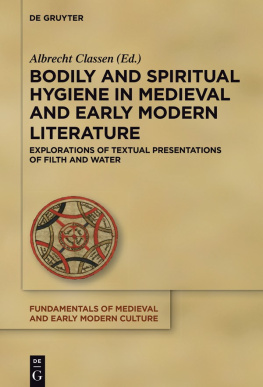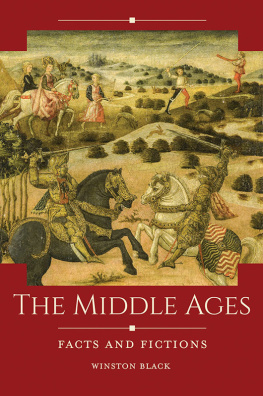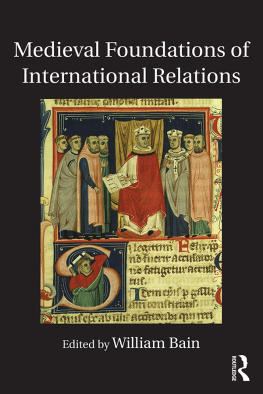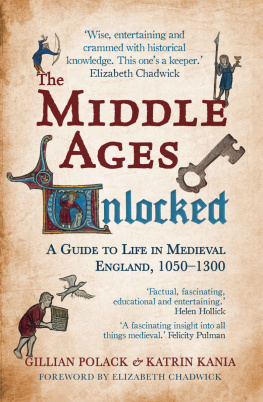Bridging the Medieval-Modern Divide
The debate about when the Middle Ages ended and the modern era began, has long been a staple of the historical literature. In order to further this debate, and illuminate the implications of a longue dure approach to the history of the Reformation, this collection offers a selection of essays that address the medieval-modern divide.
Covering a broad range of topics encompassing legal, social, cultural, theological and political history the volume asks fundamental questions about how we regard history, and what historians can learn from colleagues working in other fields that may not at first glance appear to offer any obvious links. By focusing on the concept of the medieval-modern divide in particular the relation between the Middle Ages and the Reformation each chapter examines how a medievalist deals with a specific topic or issue that is also attracting the attention of Reformation scholars. In so doing it underlines the fact that both medievalists and modernists are often involved in bridging the medieval-modern divide, but are inclined to construct parallel bridges that end between the two starting points but do not necessarily meet. As a result, the volume challenges assumptions about the strict periodization of history, and suggests that a more flexible approach will yield interesting historical insights.
Bridging the Medieval-Modern Divide
Medieval Themes in the World of the Reformation
Edited by
JAMES MULDOON
Rutgers University-Camden, USA
First published 2013 by Ashgate Publishing
Published 2016 by Routledge
2 Park Square, Milton Park, Abingdon, Oxon OX14 4RN
711 Third Avenue, New York, NY 10017, USA
Routledge is an imprint of the Taylor & Francis Group, an informa business
Copyright 2013 James Muldoon
James Muldoon has asserted his moral right under the Copyright, Designs and Patents Act, 1988, to be identified as the editor of this work.
All rights reserved. No part of this book may be reprinted or reproduced or utilised in any form or by any electronic, mechanical, or other means, now known or hereafter invented, including photocopying and recording, or in any information storage or retrieval system, without permission in writing from the publishers.
Notice:
Product or corporate names may be trademarks or registered trademarks, and are used only for identification and explanation without intent to infringe.
British Library Cataloguing in Publication Data
Muldoon, James, 1935-
Bridging the medieval-modern divide : medieval themes in the world of the Reformation. (Catholic Christendom, 1300-1700)
1. Reformation. 2. Middle Ages.
I. Title II. Series
940.23-dc23
Library of Congress Cataloging-in-Publication Data
Bridging the medieval-modern divide : medieval themes in the world of the reformation / edited by James Muldoon.
pages cm. (Catholic christendom, 1300-1700)
Includes index.
ISBN 978-1-4094-4763-4 (hardcover) 1. Middle Ages--Historiography. 2. Medievalists. 3. Reformation--Historiography. I. Muldoon, James, 1935-
D116.B75 2013
940.1072dc23
2012038191
ISBN 9781409447634 (hbk)
ISBN 9781315569963 (ebk)
Contents
Introduction
Bridging the Medieval-Modern Divide
James Muldoon
Meriem Pages
Cary J. Nederman
Margaret Kim
George Dameron
Burton Van Name Edwards
Jeannine Olson
James Muldoon
Bruce Braisington
List of Figures and Tables
Figures
Tables
Series Editors Preface
The still-usual emphasis on medieval (or Catholic) and reformation (or Protestant) religious history has meant neglect of the middle ground, both chronological and ideological. As a result, continuities between the middle ages and early modern Europe have been overlooked in favor of emphasis on radical discontinuities. Further, especially in the later period, the identification of reformation with various kinds of Protestantism means that the vitality and creativity of the established church, whether in its Roman or local manifestations, has been left out of account. In the last few years, an upsurge of interest in the history of traditional (or Catholic) religion makes these inadequacies in received scholarship even more glaring and in need of systematic correction. The series will attempt this by covering all varieties of religious behavior, broadly interpreted, not just (or even especially) traditional institutional and doctrinal church history. It will to the maximum degree possible be interdisciplinary, comparative and global, as well as non-confessional. The goal is to understand religion, primarily of the Catholic variety, as a broadly human phenomenon, rather than as a privileged mode of access to superhuman realms, even implicitly.
The period covered, 13001700, embraces the moment which saw an almost complete transformation of the place of religion in the life of Europeans, whether considered as a system of beliefs, as an institution, or as a set of social and cultural practices. In 1300, vast numbers of Europeans, from the pope down, fully expected Jesuss return and the beginning of His reign on earth. By 1700, very few Europeans, of whatever level of education, would have subscribed to such chiliastic beliefs. Pierre Bayles notorious sarcasms about signs and portents are not idiosyncratic. Likewise, in 1300 the vast majority of Europeans probably regarded the pope as their spiritual head; the institution he headed was probably the most tightly integrated and effective bureaucracy in Europe. Most Europeans were at least nominally Christian, and the pope had at least nominal knowledge of that fact. The papacy, as an institution, played a central role in high politics, and the clergy in general formed an integral part of most governments, whether central or local. By 1700, Europe was divided into a myriad of different religious allegiances, and even those areas officially subordinate to the pope were both more nominally Catholic in belief (despite colossal efforts at imposing uniformity) and also in allegiance than they had been four hundred years earlier. The pope had become only one political factor, and not one of the first rank. The clergy, for its part, had virtually disappeared from secular governments as well as losing much of its local authority. The stage was set for the Enlightenment.
Thomas F. Mayer,
Augustana College
Preface
James Muldoon
The debate about when the Middle Ages ended and the modern era began, long a staple of historical literature, has received new life as scholars point to the end of the Enlightenment and the arrival of the postmodern era. With the death of the modern world, the end of the Enlightenment Project as some call it, there are a number of fundamental questions about the corpse that can be answered now that its life has ended and its innermost secrets can be revealed. The questions include not only the obvious one about what caused the death of the patient but also what were his characteristic elements, did he possess any congenital weaknesses inherited from his ancestors, and what caused his demise? Additionally, are there any lessons to be learned from the deceaseds life and are there any heirs? From the specialized perspective of the medievalist, these issues appear in the form of questions about the origins of the modern era and its relation to the medieval world. When did the modern world begin? Was it rooted in the Middle Ages or was it a strikingly new era that broke sharply with what went before?






